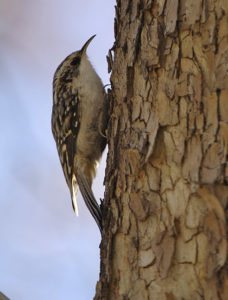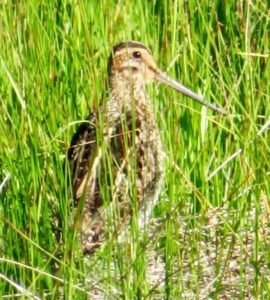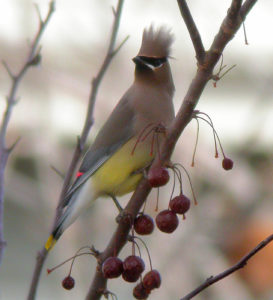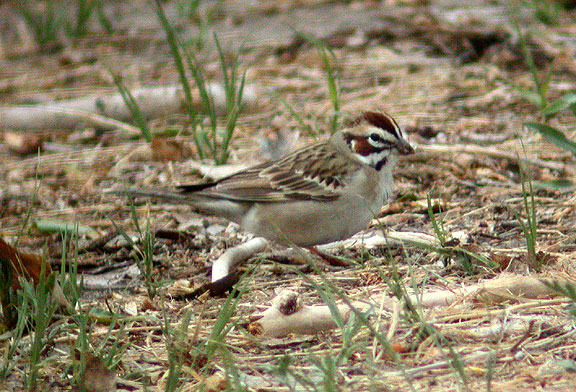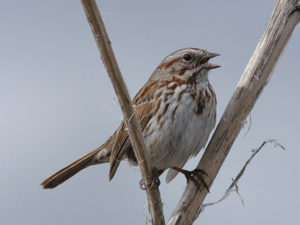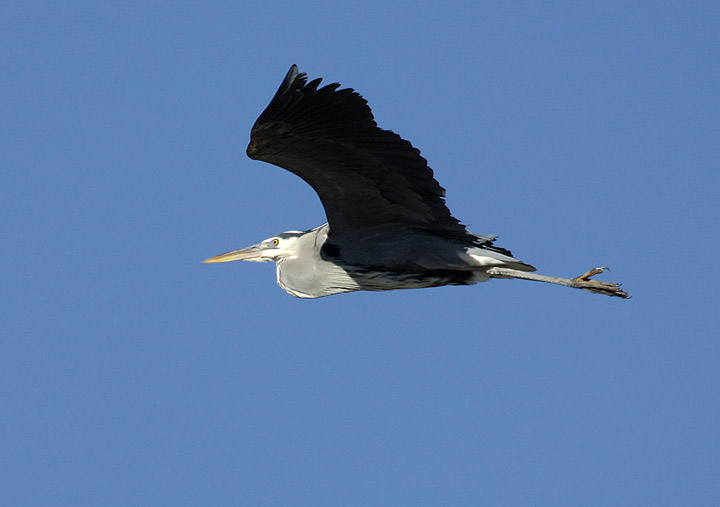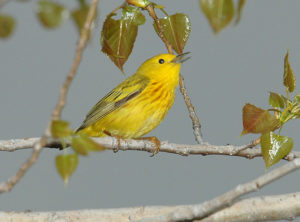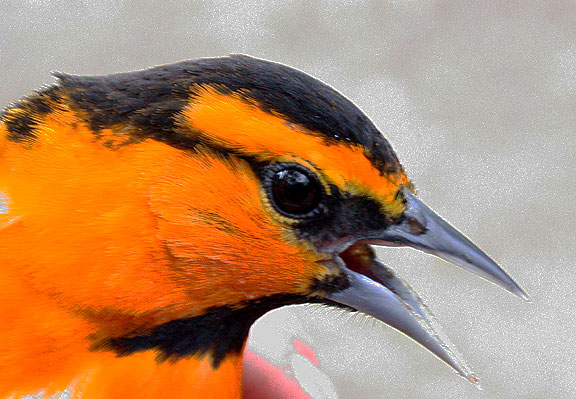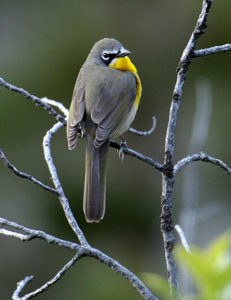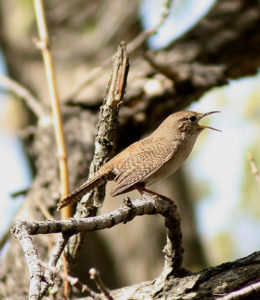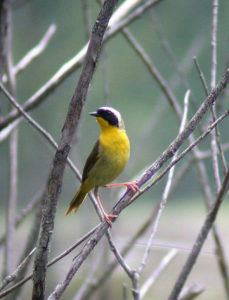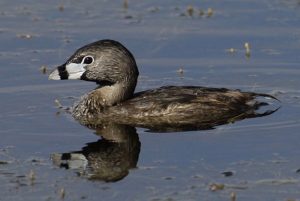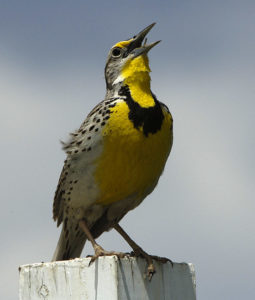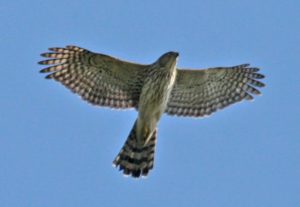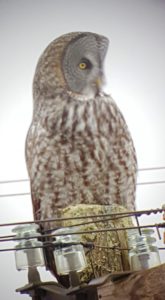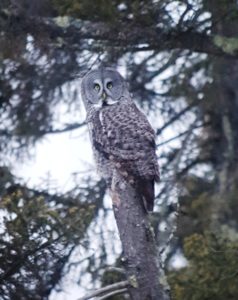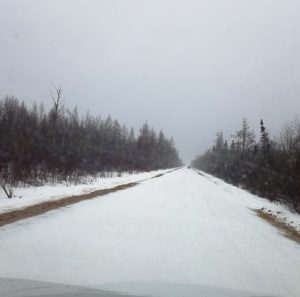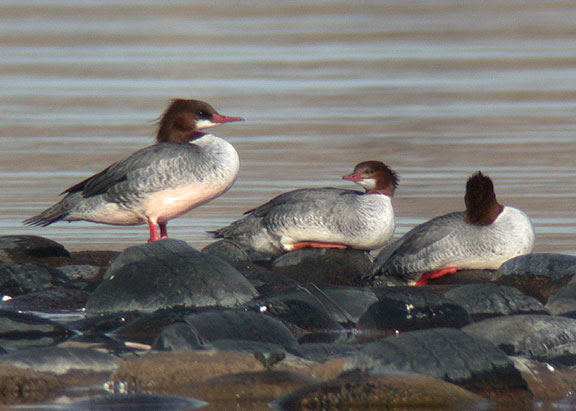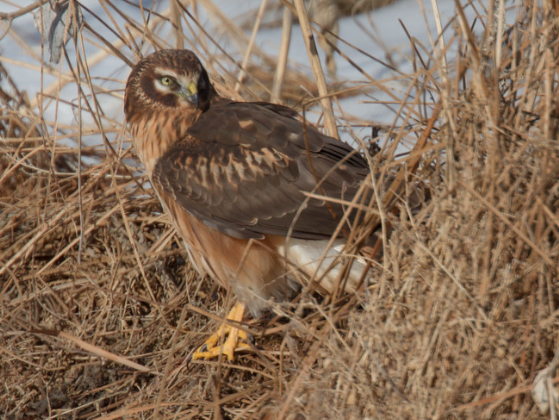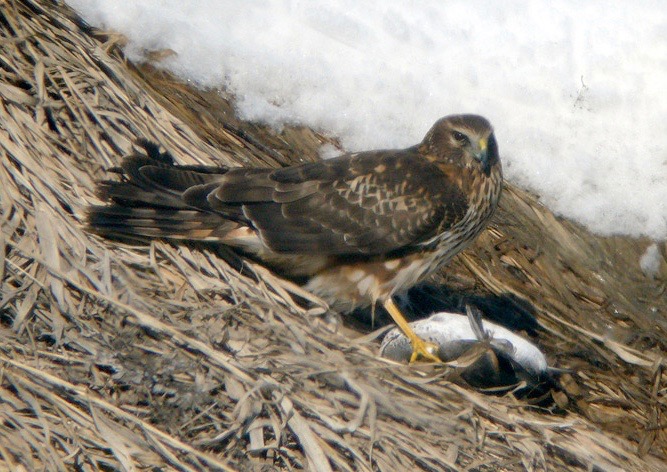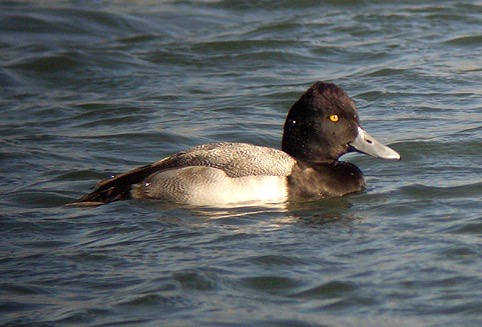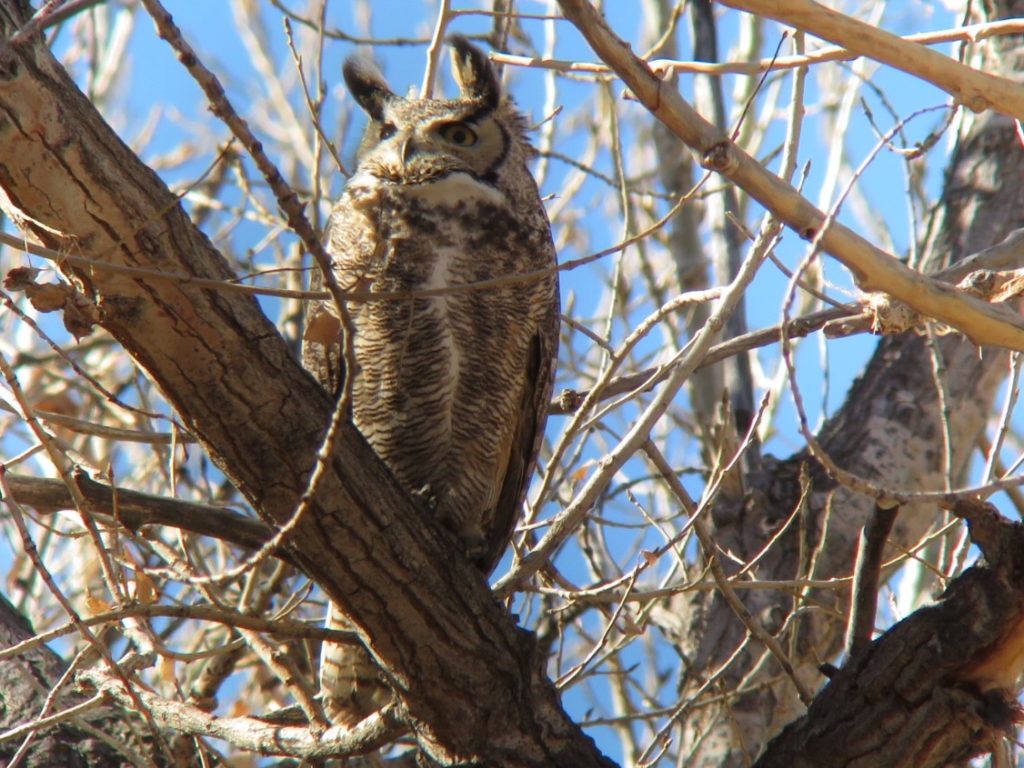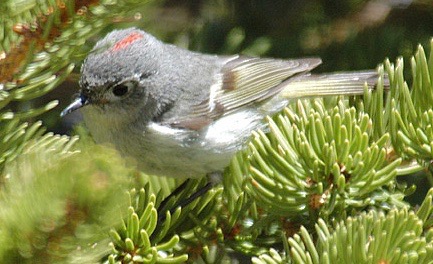
Not a huge number of species this past Saturday morning, only 27 (see list below). It warmed up quickly which may have been a factor.
We got to see a Red-wing chasing a Red-tail, attempting to move it on out of the area. In the same part of the color spectrum, a few of us were able to see the crown of the male Ruby-crowned Kinglet (see above photo) as he carried food back to the nest to feed his youngsters. We had a great, though distant, view of a male Black-headed Grosbeak; got to watch a Brown Creeper working over a Douglas-Fir pretty thoroughly, and had a dazzling to-and-fro display by the local Cliff Swallows, that nest on the US 285 bridge by the parking lot, as they carried food back to their mud nests.
We had a number of interesting side discussions as we contemplated the flattened petiole of the aspen leaves, relished the multitude of path-side flowers, and learned a bit about differentiating the various conifers from one another, e.g. pine needles grow in bundles (fascicles), while spruce and Douglas-Fir needles emerge singly. Jeff Jaacks shared some fascinating geology tidbits, explaining how the mosaic of underlying igneous and metamorphic bedrock at Meyer Ranch, due in part to differences in pH, directly influences the forest that grows from their soil – Lodgepole Pine forest growing locally on amphibole biotite gneiss (a metamorphic rock), and Ponderosa Pine forest growing on granite (an igneous rock). I told Jeff, that a little bit of knowledge is a dangerous thing, so I hope I’ve gotten this at least partly right.
The highlight of the morning was having four calling Wilson’s Snipe, of which we were able to see one very well and quite close to us. We saw two others that were more hidden, and heard a fourth a bit further off. Very special!
Good birding!
Chuck
Meyer Ranch Open Space, Jul 1, 2017
27 species
Red-tailed Hawk (Buteo jamaicensis) 1
Wilson’s Snipe (Gallinago delicata) 4
Broad-tailed Hummingbird (Selasphorus platycercus) 3
Hairy Woodpecker (Rocky Mts.) (Picoides villosus orius/icastus) 1
Northern Flicker (Red-shafted) (Colaptes auratus [cafer Group]) 3
Hammond’s Flycatcher (Empidonax hammondii) 1
Cordilleran Flycatcher (Empidonax occidentalis) 3
Warbling Vireo (Vireo gilvus) 4
Steller’s Jay (Interior) (Cyanocitta stelleri [diademata Group]) 3
Cliff Swallow (Petrochelidon pyrrhonota) 35
Mountain Chickadee (Poecile gambeli) 6
Pygmy Nuthatch (Sitta pygmaea) 10
Brown Creeper (Certhia americana) 1
House Wren (Troglodytes aedon) 4
Ruby-crowned Kinglet (Regulus calendula) 5
Hermit Thrush (Catharus guttatus) 1
American Robin (Turdus migratorius) 7
Yellow-rumped Warbler (Audubon’s) (Setophaga coronata auduboni) 2
Chipping Sparrow (Spizella passerina) 3
Dark-eyed Junco (Gray-headed) (Junco hyemalis caniceps) 11
Savannah Sparrow (Passerculus sandwichensis) 2
Song Sparrow (Melospiza melodia) 3
Western Tanager (Piranga ludoviciana) 2
Black-headed Grosbeak (Pheucticus melanocephalus) 1
Red-winged Blackbird (Agelaius phoeniceus) 5
Brown-headed Cowbird (Molothrus ater) 1
Pine Siskin (Spinus pinus) 1


